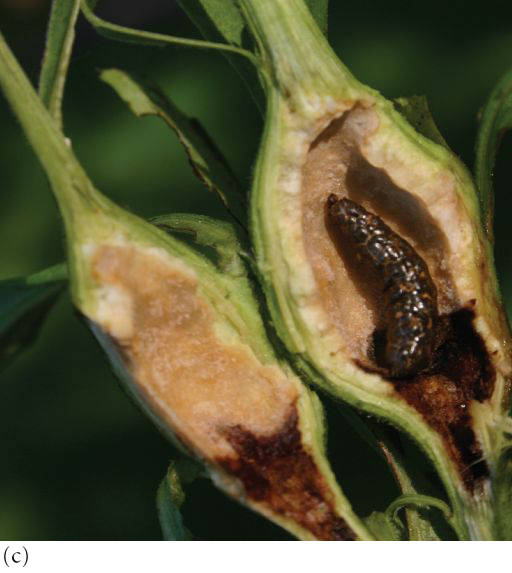 |
| Previous Image | Next Image |
| Description: They found that four of their nine insect species showed evidence of genetic divergence among host plants. This high number supports the idea that variation among host species can lead to genetic specialization, which could be the first step towards speciation. In a follow-up study, the authors show that such differentiation is not limited to the plant and herbivore, but can also extend to the parasitoids of the herbivores (Stireman et al. 2006). They again sampled a broad geographic range, this time focusing exclusively on the common gall-forming insects of these plant species. Many of these insects will themselves serve as host to a variety of parasitoid species. Again using genetic analysis, Heard and his colleagues were able to show that the parasitoid populations themselves were genetically differentiated as a function of the plant species their host insect was feeding upon, even though the parasitoid had no direct interactions with the plant itself! They suggest that host-race formation can cascade to these top predators, potentially contributing to increased diversity for them as well. The studies by Heard and colleagues leave many questions unanswered, such as what about the other 100 species of insects that feed on these plants? What are the mechanisms? When did this occur? Heard and colleagues readily acknowledge their study is not the end to the story, but instead just the beginning. Continued research by them, and by the next generation of ecologists, will lead to more answers, and of course, even more questions. By combining ecology, evolution, field work, and genetic analysis, details of exploitation are being unveiled that could never before be seen.
Picture Stats: Views: 1167 Filesize: 162.17kB Height: 573 Width: 512 Source: https://biology-forums.com/index.php?action=gallery;sa=view;id=1974 |
